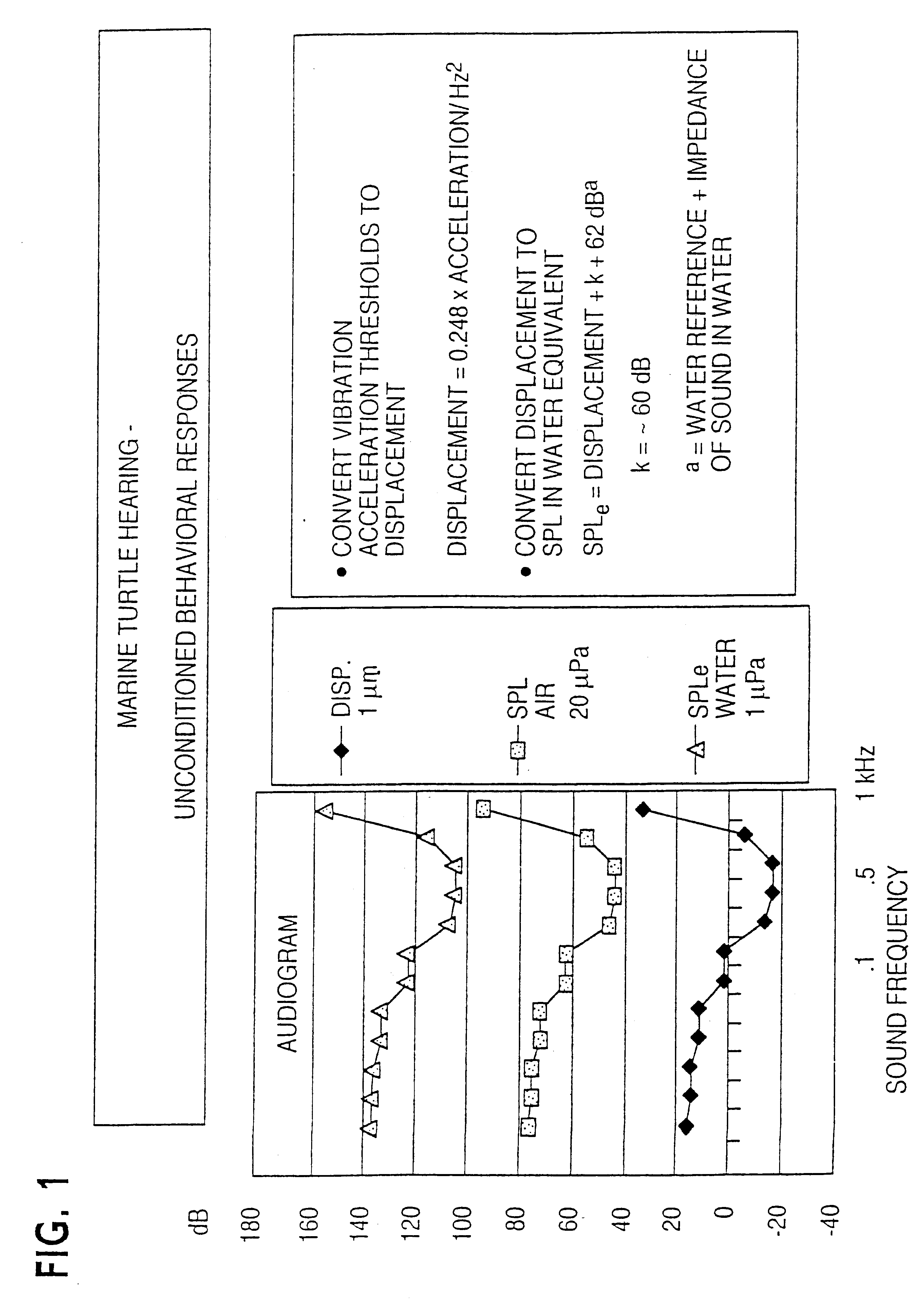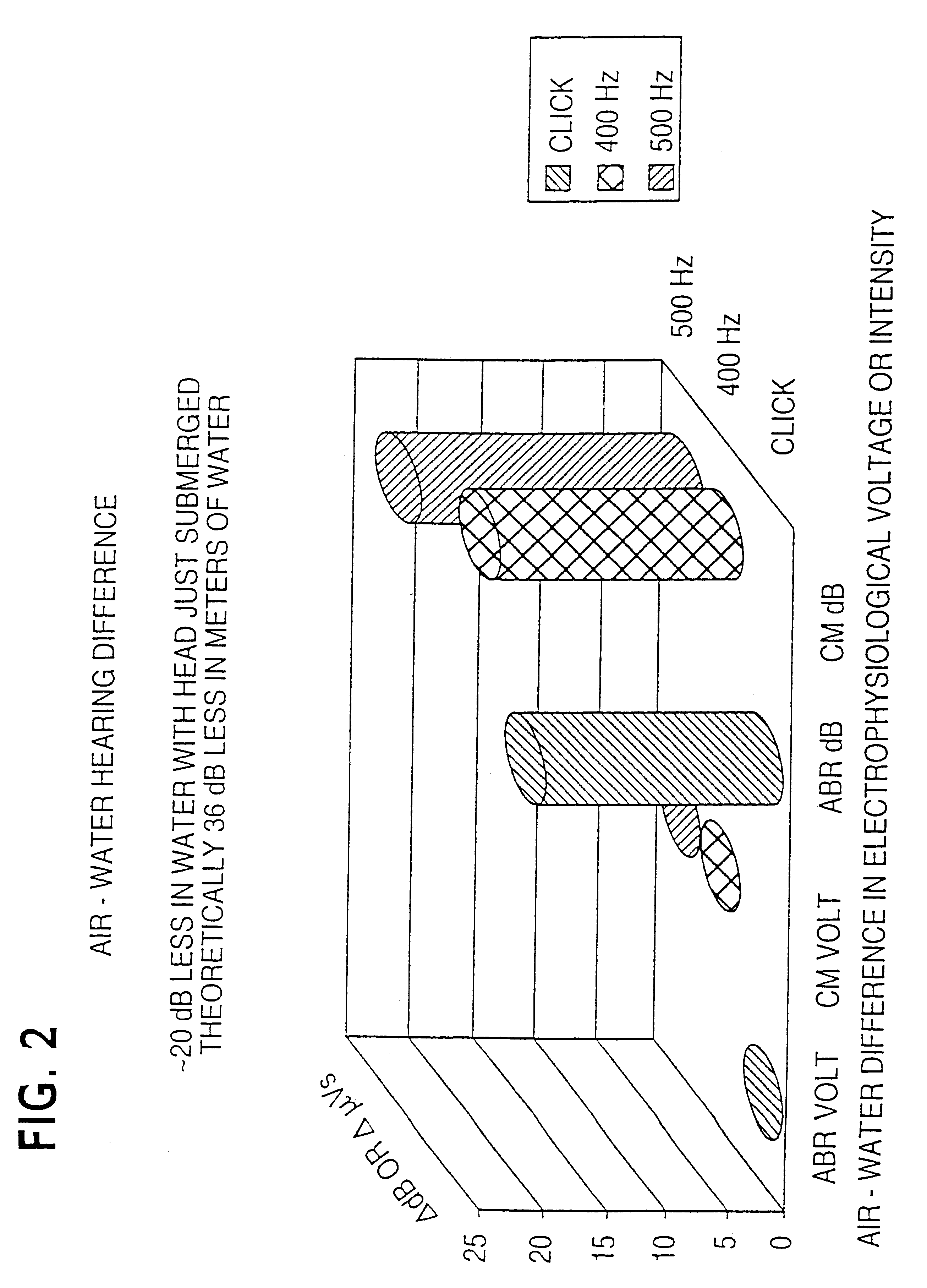Marine turtle acoustic repellent/alerting apparatus and method
a technology for acoustic repellent and alerting apparatus, which is applied in the field of marine turtle acoustic repellent/alerting apparatus and method, can solve the problems of purported scaring of dolphins, general ineffective alarms to warn turtles of possible danger, and in particular danger of marine turtles
- Summary
- Abstract
- Description
- Claims
- Application Information
AI Technical Summary
Problems solved by technology
Method used
Image
Examples
Embodiment Construction
The system and method of the present invention provides three classes of stimuli: low frequencies (<200 Hz), the most sensitive frequencies (200-900 Hz), and middle ear resonant frequencies (900-25,000+Hz), as shown in FIG. 5. In the acoustical mode, each type of signal can be projected from a standard source into the water. Such a standard acoustic source may correspond to Device # USN J-9 or USN J-15, available from the U.S. Navy's Underwater Sound Reference laboratory in Orlando, Fla. In the present invention, signals may be tonal or complex, pulsed or modulated. Depending upon the depth and bottom conditions, spherical or cylindrical spreading will typically occur. In either case, sound will propagate over a wide area. If turtles are in the immediate proximity to a fixed source, this may suffice to trigger an alarm and deterrent effect. Low frequencies will trigger diving / surfacing behaviors (depending on the turtle), mid range frequencies will be detected best in high ambient b...
PUM
 Login to View More
Login to View More Abstract
Description
Claims
Application Information
 Login to View More
Login to View More - R&D
- Intellectual Property
- Life Sciences
- Materials
- Tech Scout
- Unparalleled Data Quality
- Higher Quality Content
- 60% Fewer Hallucinations
Browse by: Latest US Patents, China's latest patents, Technical Efficacy Thesaurus, Application Domain, Technology Topic, Popular Technical Reports.
© 2025 PatSnap. All rights reserved.Legal|Privacy policy|Modern Slavery Act Transparency Statement|Sitemap|About US| Contact US: help@patsnap.com



